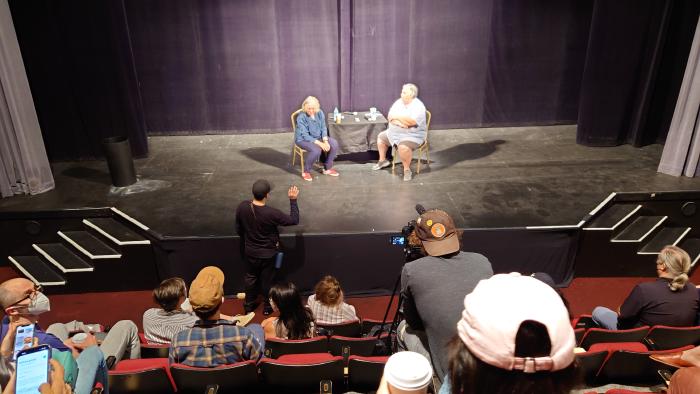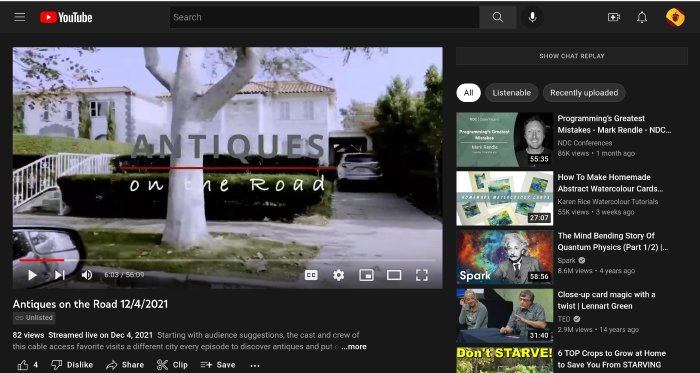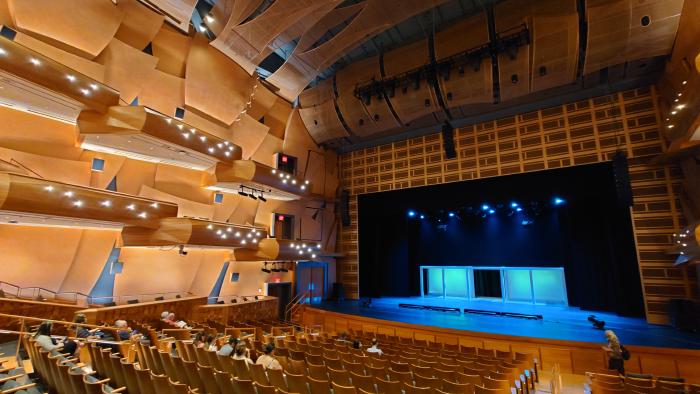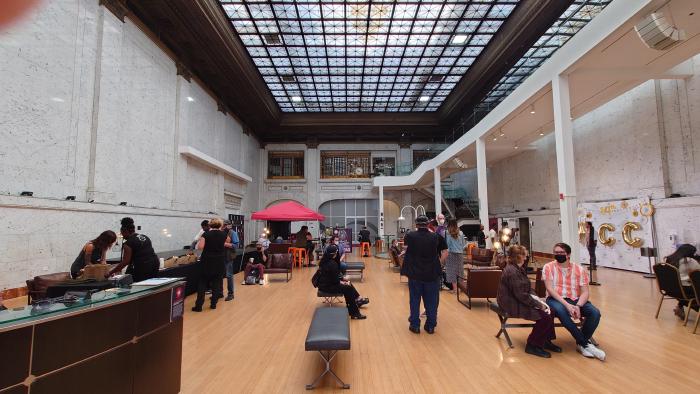You make the tool, then the tool makes you!

“The medium is the message.” The tools artists use to shape their art, turn around and shape those same artists who use them. TV is dead. And if theatre is to live, we’ll need better tools than what Silicon Valley has given us.
This weekend was filled with performances and talkbacks by legendary theatre theorist Anne Bogart and the SITI Company. The company performed their first piece from 1993 again at Chapman University’s Musco Center for the Arts - The Medium.
It has this to say:
The medium [Theatre, TV, The internet] is the message.

Anne Bogart is one of two highly influential developers of Viewpoints - a way of breaking down dance and theatre into its fundamental elements. It’s an entirely separate tool from the older and better-known Stanislavskian techniques of The Method.
The SITI company is well known for applying Viewpoints in their work, along with a physically exhaustive training technique for actors by Suzuki Tadashi. Suzuki/Viewpoints allowed SITI to open up the possibilities of scene and stage work, and grant greater collective agency to discover a new approach to making plays. Rather than having a writer create the whole piece, and a director tell everyone what to do, the artists Devise the work together through their understanding of Viewpoints, Suzuki, and each other.
“When [the Artistic Directors] said ‘This top-down thing isn’t working, it was prescient. The top-down thing isn’t working."Anne Bogart
“How do we recreate our theatre? How do we keep telling our stories? How do you change your practice? Must it change?” Luis Alfaro
The Building counts as a Medium
Walking into the Musco Center for the Arts at Chapman University was a jaw-dropping experience. Perhaps in New York or Washington DC there are theatres to equal it. Centuries-old Drury Lane in London almost does.
But if “the medium is the message”, what message are we sending theatre students when the building - the apparatus under which their art is performed in school - will be the grandest they will ever encounter?
For small theatre ensembles in LA, lights and black-painted walls in a flimsy too-small unit on the second floor of a strip mall is called “pretty nice”. A scrappy mad-max-style existence awaits these students. Are their schools preparing them?
Where are our new common theaters?
What’s it say about the state of our arts?
The Medium
The Medium, the play itself - has layers.
Layer 1: The Story
Marshall McLuhan is giving a speech about our human relationships to new technology. “What’s that buzzing?”, he says. He has a stroke.
Layer 2: The Technique
The Medium is a technical masterpiece. The Performers are working at the peak of their physical endurance, creating interleaving stage pictures, kinesthetically responding to one another, and to the light and sound cues.
The light and sound operators need to be just as present as the actors on stage in order to achieve the proper effects. All props to them for doing so without training with the ensemble.
The words are dense with ideas and those ideas rush at the audience in a torrent. Reading the script alone would be challenging. Putting something so seemingly un-presentable on the stage and doing so while keeping the audience’s attention for 90 minutes, with no relief of the tension is an incredible feat.
What’s equally impressive was that every idea could be clearly understood. In the back rows, I didn’t miss anything. I can’t even say that about multi-million dollar streaming series with scripts written for easy consumption. What SITI did would never be attempted by those major studios. They’d say it was impossible.
But it is possible, due to another technique of Viewpoints: repetition. The same words are spoken over and over in different contexts and situations so that they become familiar enough that you start catching the nuance.
Layer 3: The Message
Thematically, it’s interesting to note that though this play has not been modified since its original performance in 1993, it resonates even more so today. Much of the discussion is about TV, and though traditional TV is dying if not already dead, the concepts still apply to streaming.
I’m reminded of Bo Burnham Inside. Showing the extreme inhuman isolation our connected technologies both solve and inflict upon us.
What a joy it was just being in a lobby with people talking about the play and the talkbacks.
Several lobby conversations drew out notions about how Theatre should change in light of a world driven by software, the internet, and the companies that write the apps we live by.
If the medium is the message, then the medium of web apps does not have a pleasant message.
The apps large companies created for us to connect to each other — Facebook, Google, Youtube, Twitch, Tiktok, Twitter, Instagram — allow for theatre to exist, but do not allow for its growth, agency, or community.
Youtube, for example, is a supportive medium if:
- You create “content” (note: not Art) designed from the start to compete on its user interface. Forget all of your ideas, just make it so it beats the other youtubers. The platform itself discourages attention spans.
- You have an account that is for you individually. You post individually about yourself encouraging narcissism and further discouraging ensemble or team creations. Get others to “like” you so that the algorithm allows others to see you.
- You happen to have been one of the first creators on the platform.

To the left - your streaming show.
To the right - Youtube taps your audience on the shoulder to suggest that they abandon you to watch something else.
All the other platforms are like this too, or worse. They have been made for us by non-theatre companies stocked with product owners and software engineers who neither understand nor consider our needs. But they are arrogant enough to assert that they have done so. Those tools they have made are now making us, and making our art worse.
And it’s our fault. We need to build our own software. We cannot rely on others who don’t understand us to make those tools for us. Artists make the tools they use to make art. We make the tools that make us better.
Make our own medium; Tell our own message.
Use someone else’s medium; Tell someone else’s message.
We need software platforms that support the arts, not quietly suppress them. And the default assumptions made when programming apps are what’s in our way.
If theatre is to live in the 22nd century, we as a community need to learn to write software and build the platforms we need to support our art. It’s going to require a lot of thinking. But we absolutely must build it ourselves if there’s going to be a future worth living in.
Layer 4: The Medium is the Message
In the Medium, five performers cooperate brilliantly together by listening very closely to themselves, each other, the lights and sound, and especially the audience.
That’s the message.
That’s the model utopia being proposed by the SITI company. Beyond story, beyond technique, beyond technology, the message is community.
“Don’t be an asshole."Will Bond
“Don’t walk into the room like you know what’s going to happen."Ellen Lauren
“The theatre is about us. How are we getting along? How can we get along better?"Anne Bogart
“If the coalition gets along, the coalition is not big enough."Luis Alfaro
“Is technique shutting down your options or is it opening up your options?"Anne Bogart
“You have to get the audience breathing right."Luis Alfaro

… What’s that buzzing?


